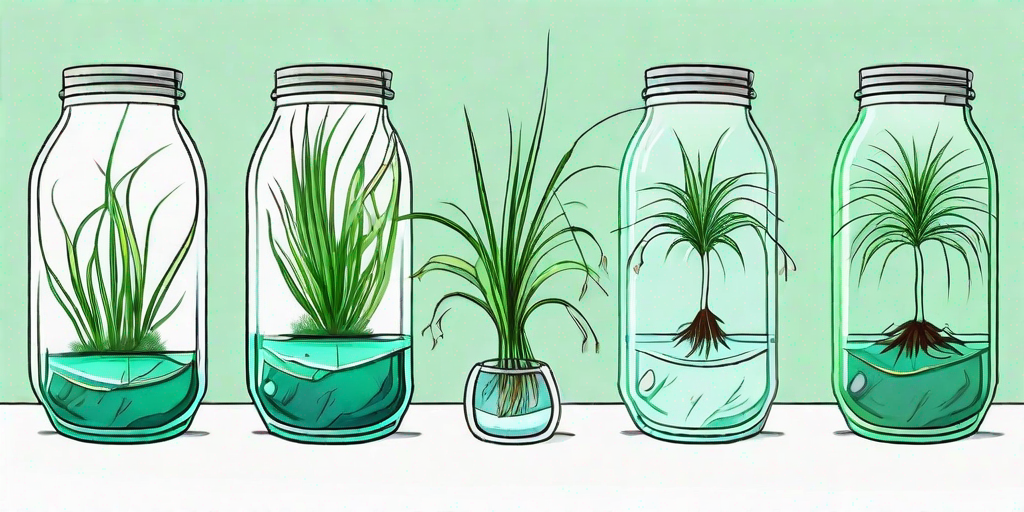
Welcome, green-thumbed enthusiasts and curious readers alike, to the wonderful world of hydroponics! Today, we're diving into the fascinating topic of growing spider plants, those charmingly resilient houseplants, in water. Yes, you read that right - no soil needed! So, buckle up, plant lovers, because we're about to embark on a journey that defies traditional gardening norms and embraces the magic of water propagation.
Understanding Spider Plants: A Quick Overview
Before we dive into the hydroponics of it all, let's take a moment to appreciate the star of our show: the spider plant. Known scientifically as Chlorophytum comosum, the spider plant is a perennial favorite among houseplant enthusiasts due to its hardiness and easy-going nature. It's like the laid-back friend who's always up for a good time but doesn't need constant attention.
Native to tropical and southern Africa, spider plants are known for their long, arching leaves that are green with white or yellow stripes. They're also famous for their "spiderettes," little baby plants that dangle from the mother plant like spiders on a web. It's a bit of a creepy-crawly image, but we promise it's much more charming in plant form!
The Benefits of Spider Plants
Spider plants aren't just pretty to look at; they're also air-purifying powerhouses. According to NASA's Clean Air Study, spider plants can remove up to 90% of the toxins in your indoor air. They're like your personal, photosynthesizing air purifiers, except they don't require electricity and they're much more stylish.
Spider plants are also non-toxic, making them a great choice for households with pets or young children. Plus, their spiderettes make propagation a breeze. You can easily grow an army of spider plants from just one mother plant. But we're getting ahead of ourselves, let's first learn how to grow them in water.
Hydroponics: The Art of Growing Plants in Water
Hydroponics, derived from the Greek words for water (hydro) and work (ponos), is a method of growing plants without soil. Instead, plants are grown in an inert medium like perlite or clay pellets, or in our case, just plain water. It's like giving your plants a swimming lesson, except they never leave the pool.
Hydroponics has several advantages over traditional soil-based gardening. It's cleaner (no more dirt under your fingernails), uses less water, and can result in faster plant growth. Plus, it's a great conversation starter at parties. "Oh, this? It's just my hydroponic spider plant. No big deal."
Why Spider Plants Thrive in Water
Spider plants are particularly well-suited to hydroponic growth due to their robust root system. These roots are excellent at absorbing nutrients directly from water, making them ideal candidates for soil-less cultivation.
Moreover, spider plants are known for their adaptability. They can tolerate a wide range of conditions, from low light to varying humidity levels. This makes them a great choice for hydroponic beginners. They're like the training wheels of the hydroponic world.
How to Grow Spider Plants in Water: A Step-by-Step Guide
Now that we've covered the basics, let's get to the fun part: growing your own hydroponic spider plant. Don't worry, it's easier than it sounds. In fact, we've broken it down into a simple, step-by-step guide. So, roll up your sleeves and let's get started!
- Choose Your Plant: Start with a healthy spider plant. Look for one with vibrant green leaves and no signs of disease or pests. Remember, a happy plant is a healthy plant.
- Prepare Your Cutting: Take a cutting from the mother plant. This should be a spiderette or a section of the plant with at least one or two leaves and roots. It's like taking a piece of the plant's DNA to create a clone.
- Place in Water: Place your cutting in a container filled with water. Make sure the roots are submerged, but the leaves are not. We don't want any leaf-drowning incidents on our watch.
- Wait and Watch: Now comes the hardest part: waiting. Over the next few weeks, you should see new roots starting to form. It's like watching a baby learn to walk, but much slower and less noisy.
- Maintain Your Plant: Change the water every week to prevent algae growth and keep your plant happy. Remember, a clean plant is a happy plant.
Common Questions About Growing Spider Plants in Water
Can all plants be grown in water?
No, not all plants are suitable for hydroponic growth. Some plants require the structure and nutrients provided by soil to thrive. However, many houseplants, like spider plants, pothos, and philodendrons, do well in water.
How often should I change the water?
It's best to change the water once a week to prevent algae growth and keep the water fresh and full of oxygen. Think of it like changing your pet's water bowl. You wouldn't want them drinking stale water, would you?
Can I add fertilizer to the water?
Yes, you can add a water-soluble fertilizer to the water to provide additional nutrients. However, be sure to use it sparingly. Too much fertilizer can harm your plant. It's like adding salt to your food; a little enhances the flavor, but too much ruins the dish.
Conclusion
And there you have it, folks! The ins and outs of growing spider plants in water. It's a fun, easy, and clean way to expand your indoor garden and impress your friends with your hydroponic prowess. So, why not give it a try? After all, who needs soil when you've got water?
Remember, whether you're a seasoned gardener or a green-thumbed newbie, the most important thing is to have fun and enjoy the process. Happy hydroponics!















